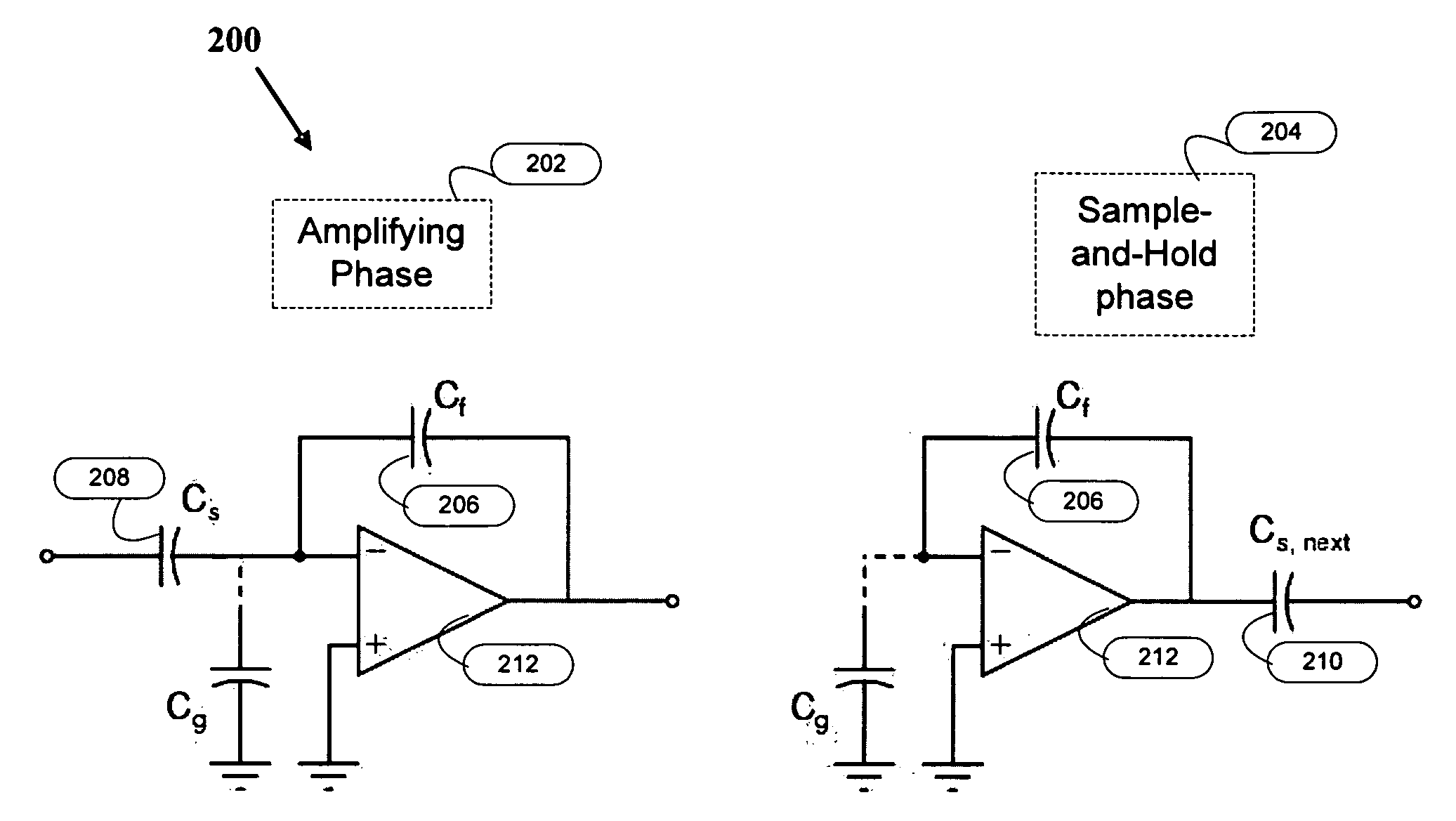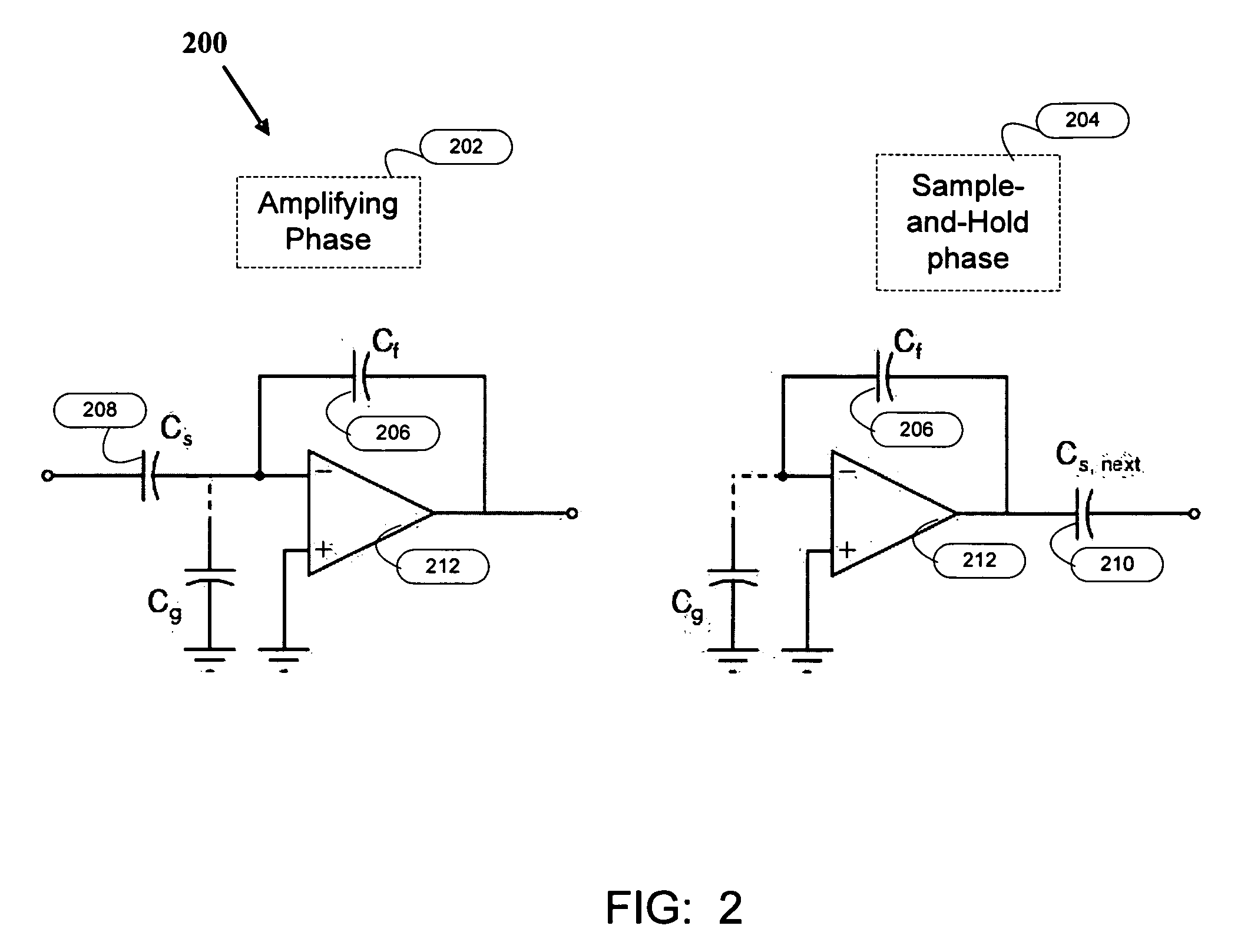System and method for reducing power dissipation in an analog to digital converter
a technology power dissipation, applied in the field of analog to digital converter, can solve the problems of consuming a significant amount of power and unsatisfactory power consumption, and achieve the effects of reducing the number of comparators, low power consumption and reducing power dissipation
- Summary
- Abstract
- Description
- Claims
- Application Information
AI Technical Summary
Benefits of technology
Problems solved by technology
Method used
Image
Examples
Embodiment Construction
[0025]The present invention is a system and method for reducing power dissipation in an Analog to Digital Converter (ADC). Low power ADC architecture reduces the number of comparators used in a conventional ADC to achieve reduced power dissipation. The present invention also provides a method for reducing the bandwidth requirement on the main amplifier by using a pre-charge amplifier in an ADC.
[0026]FIG. 2 is a circuit diagram 200 illustrating the two clock phases of an ADC according to an embodiment of the invention. The two clock phases in the ADC comprise a sample-and-hold phase and an amplifying phase, described as follows.
Amplifying Phase
[0027]The amplifying phase 202 samples the input data to the ADC and calculates and amplifies a residue value which represents the difference between the input analog value and a sample of the analog value. The amplifying phase 202 amplifies the residue in a conventional manner, using a sampling capacitor (Cs) 208 and a feedback capacitor (Cf) ...
PUM
 Login to View More
Login to View More Abstract
Description
Claims
Application Information
 Login to View More
Login to View More - R&D
- Intellectual Property
- Life Sciences
- Materials
- Tech Scout
- Unparalleled Data Quality
- Higher Quality Content
- 60% Fewer Hallucinations
Browse by: Latest US Patents, China's latest patents, Technical Efficacy Thesaurus, Application Domain, Technology Topic, Popular Technical Reports.
© 2025 PatSnap. All rights reserved.Legal|Privacy policy|Modern Slavery Act Transparency Statement|Sitemap|About US| Contact US: help@patsnap.com



